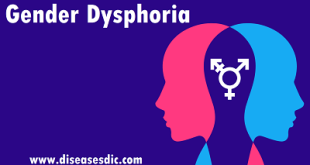Definition
Gestational diabetes is a kind of diabetes that just happens in pregnant ladies. That implies you can’t get gestational diabetes except if you’re pregnant. You may create gestational diabetes out of the blue during pregnancy or you may have a gentle undiscovered instance of diabetes that deteriorates when you’re pregnant. Normally during your pregnancy, the manner in which your body utilizes insulin changes. The insulin in your body separates the nourishment and nutrients that you get with glucose or sugar. You at that point utilize that glucose for vitality.
You’ll normally turn out to be progressively impervious to insulin when you’re pregnant to help furnish your infant with more glucose. In certain ladies, the procedure turns out badly and your body either quits reacting to insulin or doesn’t make enough insulin to give you the glucose you need. At the point when that occurs, you’ll have an excess of sugar in your blood.
Pathophysiology of Gestational diabetes
Gestational diabetes occurs when the body is unable to produce enough insulin to meet the needs of the pregnancy. Insulin is a hormone that promotes the uptake of glucose from the blood and its subsequent storage as glycogen.
In pregnancy, there is progressive insulin resistance. This means that a higher volume of insulin is needed in response to a normal level of blood glucose. On average, insulin requirements rise by 30% during pregnancy.
A woman with a borderline pancreatic reserve is unable to respond to the increased insulin requirements, resulting in transient hyperglycaemia. After the pregnancy, insulin resistance falls – and the hyperglycaemia usually resolves.
Types of Gestational diabetes
Two types of diabetes can happen in pregnancy. These are:
Gestational diabetes: In this condition, you don’t have diabetes before pregnancy. You develop it during pregnancy. This type of diabetes goes away after your baby is born.
Pregestational diabetes: In this condition, you have diabetes before getting pregnant. You may have type 1 or type 2 diabetes.
- People with type 1 diabetes don’t make insulin. Your body needs insulin to use blood sugar. You’ll need to take insulin shots.
- People with type 2 diabetes can’t use the insulin they make. Or their bodies don’t make enough insulin. You’ll need blood sugar-lowering medicine and possibly insulin.
It’s important to manage your blood sugar during pregnancy. This can lower your baby’s risk for problems.
Gestational diabetes risk factors
Gestational diabetes can develop in any woman who is pregnant. But women over the age of 25 who are of African, Asian, Hispanic, Native American or Pacific Island descent are at a higher risk.
Other factors that may increase your chances of GD include:
- Heart disease.
- High blood pressure.
- Inactivity.
- Obesity.
- Personal or family history of GD.
- Polycystic ovary syndrome (PCOS).
- Previous birth of a baby weighing nine pounds or more.
Causes
Healthcare providers don’t know what causes gestational diabetes. But they do know what happens.
The placenta gives your growing baby nutrients and water. The placenta also makes several hormones to keep the pregnancy healthy. These hormones include:
- Estrogen
- Progesterone
- Cortisol
- Human placental lactogen
These hormones can affect how your body uses insulin (contra-insulin effect). This often begins about 20 to 24 weeks into your pregnancy and could lead to gestational diabetes.
During pregnancy, more fat is stored in your body, you take in more calories, and you may get less exercise. All of these things can make your blood sugar (glucose) levels higher than normal and possibly lead to gestational diabetes.
As the placenta grows, it makes more of the hormones. The risk for insulin resistance becomes greater. Normally your pancreas is able to make more insulin to overcome insulin resistance. But if it can’t make enough to overcome the effects of the placenta’s hormones, you can develop gestational diabetes.
Symptoms of Gestational diabetes
Signs and symptoms associated with gestational diabetes include:
- Increased, frequent urination
- Increased thirst
- Fatigue
- Nausea and vomiting
- Weight loss even with increased appetite
- Blurred vision
- Yeast infections
Yet, for many pregnant women, gestational diabetes does not cause any recognizable symptoms. That is why screening tests for the condition are recommended for all pregnant women, notes.
Complications
When a woman has GD, her body passes more sugar to her fetus than it needs. With too much sugar, her fetus can gain a lot of weight. A large fetus (weighing 9 pounds or more) can lead to complications for the woman, including:
- Labor difficulties
- Caesarean birth
- Heavy bleeding after delivery
- Severe tears in the vagina or the area between the vagina and the anus with a vaginal birth
Diagnosis and test
Doctors also advises that you be tested for type 2 diabetes if you have risk factors for this condition. This testing should be done at your first prenatal visit.
Screening is done by these tests:
One-hour glucose tolerance test: You drink a special beverage high in sugar. One hour later, the healthcare provider measures your blood sugar (glucose) levels. If your levels are higher than a certain level, this is considered an abnormal result.
Three-hour glucose tolerance test: If the 1-hour test is abnormal, you will have a second glucose tolerance test done to confirm the diagnosis. You will drink another special beverage, but with more sugar. Your healthcare provider will measure your blood sugar levels 1 hour, 2 hours, and 3 hours later. You have gestational diabetes if at least two of the glucose measurements are higher than normal.
If you are diagnosed with gestational diabetes, you should get tested for diabetes 4 to 12 weeks after your baby is born. You should also get this screening at least every 3 years for the rest of your life
Treatment and medications
Treatment for gestational diabetes will be started immediately upon diagnosis. The goal is to keep your blood sugar low and steady to give you and your baby the best shot at a healthy pregnancy and birth. Your treatment will usually include some of the following:3
Diet: Limiting highly refined carbohydrates (sugars) in favor of nutrient-rich fruits, vegetables, whole grains, and lean proteins is key. A nutritionist or your doctor can help you learn how to make healthy dietary choices that keep your blood sugar at acceptable levels. This advice will include how to plan meals and snack well.
Exercise: While intense physical activity is not recommended in late pregnancy, light to moderate exercise is encouraged. An active lifestyle can help keep GD in check.
Blood sugar monitoring: Your doctor will advise you on how often you need to test your blood sugar through finger pricks, but it is typically several times a day. You will be taught how to do this on your own.
Medication, including insulin injections: Not everyone will need to use insulin. Many people are able to control blood sugar with diet and exercise alone. Your practitioner will monitor your blood sugar to determine if you need additional help from insulin injections.
Prevention of Gestational diabetes
For most women, gestational diabetes goes away after giving birth. But having it makes you more likely to develop type 2 diabetes later in life. Type 2 diabetes is the most common kind of diabetes. If you have type 2 diabetes, your pancreas makes too little insulin or your body becomes resistant to it (can’t use it normally).
Here’s what you can do to help reduce your risk of developing type 2 diabetes after pregnancy:
- Breastfeeding can help you lose weight after pregnancy. Being overweight makes you more likely to develop type 2 diabetes.
- Get tested for diabetes 4 to 12 weeks after your baby is born. If the test is normal, get tested again every 1 to 3 years.
- Get to and stay at a healthy weight.
- Talk to your provider about medicine that may help prevent type 2 diabetes.
 Diseases Treatments Dictionary This is complete solution to read all diseases treatments Which covers Prevention, Causes, Symptoms, Medical Terms, Drugs, Prescription, Natural Remedies with cures and Treatments. Most of the common diseases were listed in names, split with categories.
Diseases Treatments Dictionary This is complete solution to read all diseases treatments Which covers Prevention, Causes, Symptoms, Medical Terms, Drugs, Prescription, Natural Remedies with cures and Treatments. Most of the common diseases were listed in names, split with categories.







